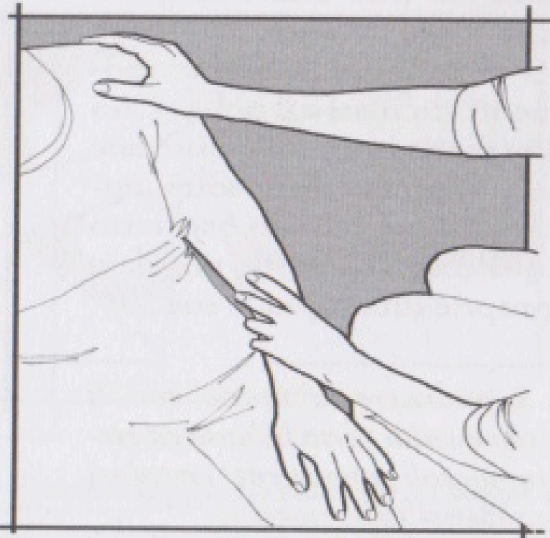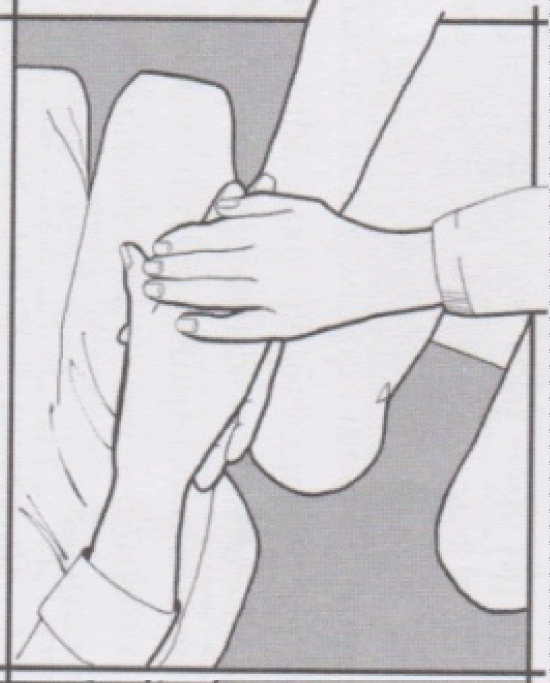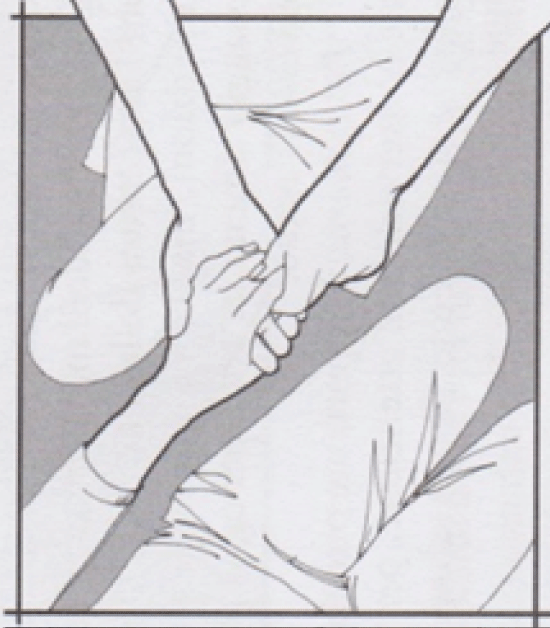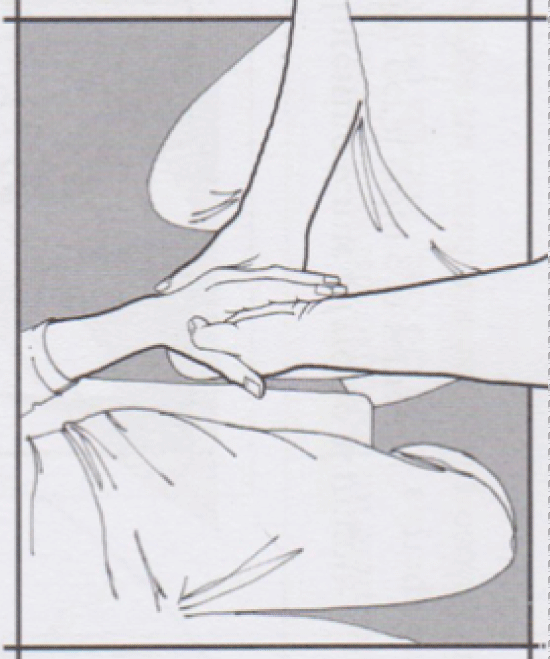Non-Pharmacological Therapies in People with Alzheimer Dementia: Comparing Hand Massage and Conversational Approach in the Italian Context
Abstract
Objectives
Non-pharmacological therapies have shown to have significant benefits in reducing behavioral psychological symptoms in people with dementia. This is a pilot study to compare the efficacy of two non-pharmacological treatments in people with mild to moderate Alzheimer's Dementia (AD) with behavioral psychological symptoms: hand massage and conversational approach.
Method
Older adults with mild-to moderate dementia (N = 22) were randomly assigned to two treatments: hand massage and conversational approach. Both of groups attended two sessions twice a day for 4 weeks. The outcome measures were related to behavioral psychological symptoms in dementia (measured with Neuropsychiatric Inventory-NPI-and Agitated Behavior Scale-ABS).
Results
Both treatments reduced on NPI and ABS measures. In particular both groups showed a significant reduction in the level of following NPI items: agitation, irritability and motor activity. Caregiver distress also reduced. Hand massage group, compared with conversational approach showed a more significant reduction on motor activity. Related to ABS, hand massage group compared with conversational group showed a significant reduction on level of impatient, rocking, wandering, rapid speech, restlessness with an increase of collaboration.
Conclusion
This is a pilot study and other researches have to be conducted, but the results confirm the efficacy of two non-pharmacological treatments, a promising intervention to sustain clinical practice with people with dementia.
Keywords
Dementia, Non-pharmacological therapy, Behavioral psychological symptoms
Introduction
Hand massage and conversational approach are included in non-pharmacological and psychosocial interventions used in dementia care with the aim of counteracting cognitive decline and reducing frequent problems of depression, anxiety, aggression and related psychological and behavioral manifestations, improving quality of life, or improving general health [1,2].
Different theoretical models have been proposed to explain the possible positive effects of massage and touch for people with dementia, from neurological model [3] to psychological one which looks to the massage as a way to stay in touch and retain a sense of meaningful, reassuring communication even when words begin to fail [4]. The sensory stimulation also involved non verbalized patterns of memories and meanings [5]. Hand massage could also help to limit cognitive decline in people with dementia but at first it reduce behavior psychological symptoms.
Conversational approach is a relational style based on specific conversational techniques known as "twelve steps". The most important rules are: don't ask questions, don't correct, don't interrupt, listen to, answer the questions, recognize emotions, use no verbal language, and accept the answers of the person. It was demonstrated that using conversational approach improves language production and promotes the participation of the person with dementia to the dialogue [6-8].
This is a pilot study and our aim is to compare, for the first time in Italy at our knowledge, two non pharmacological treatments of behavioral psychological symptoms in people with dementia: hand massage treatment [9] and conversational approach [6,10]. In line with previous studies we expected significant reduction of symptoms measured by Neuropsychiatric Inventory [11,12]. We also want to contribute to clinical practice giving more scientific basis.
Method
Participants
An Italian residential home collaborated in this study. Eligibility was based on the following criteria: (1) diagnosis of Alzheimer Dementia (AD), following DSM 5 criteria, in the mild to moderate range [a minimum score of 14 on the Mini Mental State Examination (MMSE) [13]]; (2) psychological behavioral symptoms from mild to moderate range. All the patients were on medication but, at the baseline, all of them had a similar activation level. During the treatment there were no pharmacological changes.
Among 35 people 22 eligible participants were collected.
They were balanced for age, education and level of cognitive functioning; then they were randomly allocated into two treatment groups: one named as "hand massage" (11 people, 3 males and 8 females) and the other one named as "conversational" (11 people, 3 males and 8 females). The two groups did not differ in terms of age, education and global cognitive functioning (Table 1).
Materials
Cognitive measures
The Mini Mental State Examination [13] is a brief, internationally used test of cognitive function. It is composed by 30 items assessing orientation, memory, language, attention and praxis. The score ranges from 0 to 30 and derived from the sum of each item score. Low scores indicate worse cognitive functioning.
Behavior
Behavior was assessed using the Neuropsychiatric Inventory (NPI) [11] and the Agitated Behavior Scale (ABS) [14].
The NPI assess 10 behavioral disturbances occurring in dementia patients like hallucination, delirium, agitation, depression, anxiety, euphoria, sleep and diet disorder, disinhibition, irritability, apathy. The total score (frequency X gravity) range from 0 to 12 with high score indicating more frequent and more severe behavioral disturbances. For each item is requested to the caregiver to explain his personal distress. The total distress score range from 0 to 60.
The ABS is a 14-item scale developed to monitor agitation during the acute phase of recovery from acquired brain injury. It was also used to measure agitation in people with long-term care facility residents experiencing dementia. The scale assesses behavioral disturbances like distraction, impulsiveness, no collaboration, aggression, irritability, rocking, wandering, inhibition, rapid speech, repetitive behaviors, and mood changes. Total score derived from the sum of each item score and range from 14 to 56. High score indicates severe behavioral symptoms.
Procedure
People involved into treatment group named as "hand massage" participated to sessions of massage following Goldschmidt and Von Meines's protocol [9] once a week, twice a day (mid-morning and mid-afternoon) for a month while people involved into treatment group named as "conversational" participated to sessions of conversation following guidelines of conversational approach founded by Lai [10] and Vigorelli [6,8] once a week, twice a day for a month. Each sessions, both "hand massage" and "conversational" lasted 20 minutes. All the sessions were conducted by the same trainer who received a special training both in hand massage treatment and in conversational approach. He was properly supervised.
Before starting all the participants declared his informed consent to participate to the research.
The ABS was scheduled an hour before and an hour after both treatments, while NPI was administered at the beginning and at the end of the treatment (after a month).
Intervention
Hand massage
In literature there is a great flexibility and there isn't a standardized protocol but the common goal is to take care and communicate with people with dementia through the contact when verbal communication is no longer possible [9]. Despite this flexibility and the absence of a strict protocol of intervention the results of the researches are promising. In particular hand massage treatment in people with dementia reduces the stress [15], level of anxiety and blood pressure [16], verbal aggression [17] and physical pain [18]. In this research we used the intervention proposed by Goldschmidt and Von Meines [9].
Below the description of a hand massage session
Wash the hands, remove jewelry, use a hand cream if you want and the person who receive the massage likes it. Greet the person, explain what will do. Sit down in front of him and start hand massage on the right or on the left hand. The arm should be resting on the lap or on the bed. Note if there are areas to be avoided excoriated. Stay silent and smile to create a peaceful environment.
Start hand massage (Figure 1 and Figure 2). Support the hand with the palm facing downwards (Figure 3). Run small circular movements on the knuckles (Figure 4), on the back of the hand arriving along the fingers (Figures 5). At the hand gently accompany the hand on the leg or on the lap (Figure 6). Communicate to the person the end.
Conversational approach
Conversational approach [6,8,10] is based on the ability of people with dementia to communicate in spite of aphasia. This approach distinguishes two language functions: communicative and conversational. The first allows you to understand and be understood while the second lets you exchange words with no meaning or whatever their purpose. Conversational function is preserved even in advanced stages of dementia so the person with dementia has the possibility to participate in a dialogue with or without meaning keeping the rules of conversation. People with dementia are able to converse but are no able to communicate. The conversations following conversational approach seem illogical but return meaning to the person with dementia. An example derived from the study: "help me, help me there are some thieves in my home (this is not true)" said the patient, "ok Giovanni, It is terrible…I know….I'm coming with you to the police. To be safe we're going to change the lock" answered the researcher using a calm tone of voice without prejudice, recognizing as real what is not real. There are some tricks to use in a conversation with people with dementia: maintain eye contact, absence of prejudice, the way it is transmitted the information is more important than the content, use simple and short sentences, don't interrupt the person, don't use indirect questions, don't change the subject without notifying the person, don't correct grammar or content errors [8].
To assess the gains from treatments, a series of 2X2 mixed-design ANOVAs were run (Group: Hand massage and conversational) X (Session: pre-test and post-test) on the measures of interests (the results are summarized in Table 2, Table 3 and Table 4).
Results
The results obtained in both of observer-rated scales are reported below.
Neuropsychiatric inventory
Agitation
There was a significant main effect of Session F (1,20) = 7.6 p = 0.012 indicated that, on the post-test, both of treatments groups reduced their level of agitation.
Distress agitation
There was a significant effect of Session F (1,20) = 7.83 p = 0.010 indicated that, on the post-test, caregiver of both groups participants reduced their level of distress in correspondence of agitation reducing.
Irritability
There was a significant main effect of Session F (1,20) = 9.34 p = 0.013 indicated that both of treatment groups, on the post-test, reduced their level of irritability.
Distress irritability
There was a significant effect of Session F (1,20) = 9.34 p < 0.001 indicated that, on the post-test, caregiver of both groups participants reduced their level of distress in correspondence of irritability reducing.
Motor activity
There was a significant main effect of Session F (1,20) = 57.42 p < 0.001 indicated that both of treatment group, on the post-test, reduced their level of irritability. The significant interaction Group X Session F (1,20) = 38.04 p < 0.001 indicated that only the "hand massage" group reduced, on the post-test, his level of motor activity.
Distress motor activity
There was a significant effect of Session F (1,20) = 10.66 p < 0.001 indicated that, on the post-test, caregiver of both groups participants reduced their level of distress in correspondence of motor activity reducing.
Diet
There was a significant main effect of Session F (1,20) = 11.74 p = 0.003 indicated that both of treatment group, on the post-test, reduced their level of irritability. The significant interaction Group X Session F (1,20) = 4.59 p = 0.045.
The descriptive statistics are summarized in Table 2 and Table 3.
Agitated behavior scale
There was a significant interaction Group X Session indicated that the "hand massage" group, more than "conversational" group, reduced on the post-test level of: impatience F (1,20) = 25.2 p < 0.001; rocking F (1,20) = 8.33 p = 0.012; wandering F (1,20) = 25.2 p = 0.001; rapid speech F(1.20) = 17.61 p = 0.001; restlessness F (1,20) = 8.20 p = 0.010 while showed an increase in the level of collaboration F (1,20) = 24.83 p < 0.001.
The descriptive statistics are summarized in Table 4.
Discussion
The results of the pilot study confirmed the efficacy of both no pharmacological treatments considered: hand massage and conversational approach and also showed, for the first time at our knowledge, their efficacy on a small group of Italian people with Alzheimer's Dementia.
In particular there are no differences between two treatments on NPI measure. Both treatments reduced, after a month, the level of agitation, irritability and motor activity confirming previous results. Very interesting is, on NPI, the reduction of behavioral symptoms related to the diet with positive effects on quality of life, we presume. The reduction of behavioral psychological symptoms such as irritability, agitation and motor activity in people with dementia determined a significant reduction of caregiver distress measured by specific items of NPI because of decreasing of behavioral symptoms facilitate care. In particular Kramer and Smith [19], Lai and Vigorelli [6,10] found similar results respectively about hand massage and conversational approach. Like Field (2000) we found that only hand massage treatment determined, on the post-test, significant reducing of motor activity. The results obtained on ABS measure showed, only for hand massage group, a significant reduction after a month on symptoms like impatient, rocking, wandering, rapid speech, restlessness with an increase of collaboration. These results confirmed previous researches. Synder, Egan and Burns [20] or more recently Harris and Richards [17] showed, in people with dementia, significant reduction of anxiety, restlessness, irritability, wandering and motor activity such as our results. Same results, in line with our findings, were found in retirement home by Kurtner and colleagues [21]. The limits of our study are: no treatment group as control group, rather low sample size, no follow-up and no blind administration although we haven't had any expectations about the efficacy of treatments. Furthermore we considered the particular context of the research: a residential home so that, how suggested by the chief, an other people could mean another variable of confusion. We consider that this is an exploratory study so other future researches will be necessary to replicate our findings giving attention to methodological aspects. It would be useful a double blind study with a sample larger than ours including control group and follow-up. Despite the limits and considering the difficulty to work with people with dementia, we were been very rigorous in methodological aspects. Furthermore it will be interesting to compare single treatment with combined intervention (hand massage and conversational approach), there aren't, at our knowledge, study which move in this direction. Nevertheless our findings contribute, at first, to the research on no pharmacological therapies in people with dementia and then contribute to clinical practice giving scientific basis to non-pharmacological treatments usually used to take care of people with dementia.
Conflict of Interest
None declared.
Acknowledgements
We thank Tortorici Clelia who collected data.
References
- Cohen-Mansfield J (2001) Non pharmacological interventions for inappropriate behaviors in dementia: a review, summary, and critique. Am J Geriatr Psychiatry 9: 361-381.
- Douglas S, James I, Ballard C (2004) Non-pharmacological interventions in dementia. Adv Psychiatr Treat 10: 171-177.
- Scherder EJ, Bouma A, Steen AM (1995) Effects of short-term transcutaneous electrical nerve stimulation on memory and affective behaviour in patients with probable Alzheimer's disease. J Am Geriatr Soc 51: 1305-1317.
- Bush E (2001) The use of human touch to improve the well-being of older adults: a holistic nursing interventions. J Holist Nurs 19: 256-270.
- Opie J, Rosewarne R, Oconnor DW (1999) The efficacy of psychosocial approach to systematic literature review. Aust N Z J Psychiatry 33: 789-799.
- Vigorelli P (2004) Conversational Approach in Alzheimer Disease - La Coversazione possibile con il malato Alzheimer. Franco Angeli, Italy.
- Vigorelli P (2010) Highlighting the words in Alzheimer Disease - Geriatricresearchgroup - L'evidenza delle parole nella malattia di Alzheimer. Gruppo di ricercageriatrica.
- Vigorelli P (2012) New perspectives in residential home for old people - Aria nuovanellecase per anziani. Franco Angeli, Italy.
- Goldschmidt B, van Meines N (2013) Hand massage-Il massaggio alla mano. Erickson, Italy.
- Lai G (2001) Conversation with Alzheimer Disease. Social and health perspectives - Conversazioni con l'Alzheimer. Prospettive sociali e sanitarie, Italy.
- Cummings JL, Mega M, Gray K, et al. (1994) The Neuropsychiatric Inventory: comprehensive assessment of psychopathology in dementia. Neurology 44: 2308-2314.
- Bogner JA, Corrigan JD, Stange MS, et al. (1999) Reliability of the Agitated Behavior scale. J Head Trauma Rehabil 14: 91-96.
- Folstein MF, Folstein SE, McHugh PR (1975) "Mini-mental state". A practical method for grading the cognitive state of patients for the clinician. J Psychiatr Res 12: 189-198.
- Corrigan JD (1989) Development of a scale for assessment of agitation following traumatic brain injury. J Clin Exp Neuropsychol 11: 261-277.
- Osaka I, Kurihara V, Tanaka K, et al. (2009) Endocrinological evalutations of brief hand massage in palliative care. J Altern Complement Med 15: 981-985.
- Kim MS, Cho KS, Woo HM, et al. (2001) Effect of hand massage on anxiety in cataract surgery using local anesthesia. J Cataract Refract Surg 27: 884-890.
- Harris MC, Richards KC (2010) Physiological and psychological effects of slow -stroke back massage and hand massage on relaxation in older people. J Clin Nurs 19: 7-8.
- Wang HL, Keck JF (2004) Foot and hand massage as intervention for postoperative pain. Pain Manag Nurs 5: 59-65.
- Kramer N, Smith M (1999) Music and Touch therapies for nursing home residents with severe dementia. Ann Intern Med 12: 7-8.
- Snyder M, Egan EC, Burns K (1995) Interventions for decreasing agitation behaviors in person with dementia. J Gerontol Nurs 21: 34-40.
- Kurtner JS, Smith M, Corbin L, et al. (2008) Massage therapy versus simple touch to improve pain and mood in patients with advanced cancer: a randomized control trial. Ann Intern Med 149: 369-379.
Corresponding Author
Emanuela Capotosto, Department of communication sciences, Consultant psychologist in ISRAA-Institute Hospitalization Services and Elderly Care, humanities and international studies, Italy, Tel: +328-3832656.
Copyright
© 2017 Belacchi C, et al. This is an open-access article distributed under the terms of the Creative Commons Attribution License, which permits unrestricted use, distribution, and reproduction in any medium, provided the original author and source are credited.










